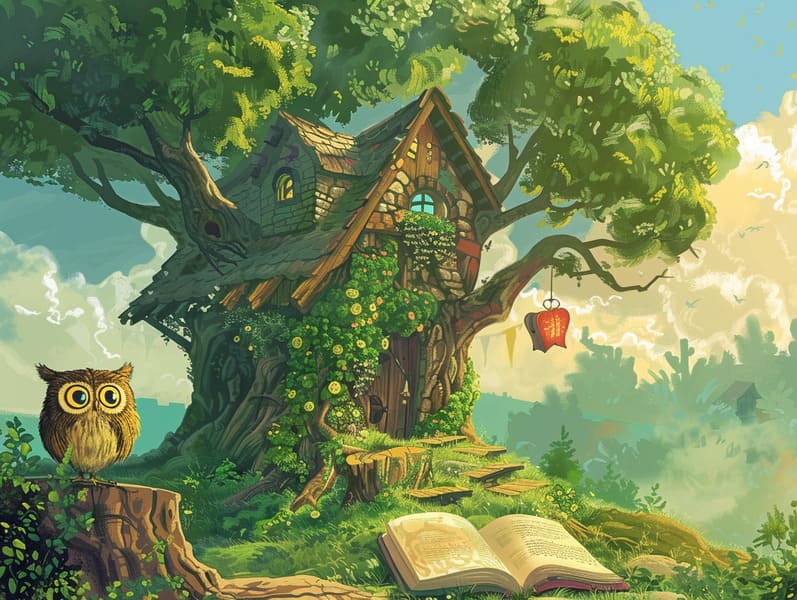The Creation of Legendary Fairy Tales with Its Unchanging Magic.
The Creation of Legendary Fairy Tales with Its Unchanging Magic.
Blog Article

Children's fairy tales have deep roots. These narratives have been whispered from one generation to the next well before they were ever inscribed. They emerged from a variety of civilizations, including Western traditions. They were initially narrated among grown-ups, often carrying themes and messages related to the societal norms and beliefs of the time.
The renowned Brothers Grimm, Jacob and Wilhelm, were among the first to gather and publish many of these beloved tales. Their compilation, "Grimm's Fables," included classics like "The Little Glass Slipper," "Little Brother and Little Sister," and "Snow White," which have since become essentials in the world of beloved fairy tales. Similarly, Hans Christian Andersen's imaginative tales, such as "The Sea Maid," and "The Ugly Duckling," have captivated hearts worldwide, cementing their place in the pantheon of famous fairy tales.
Despite their ancient origins, fairy tales remain as impactful as ever, especially as kids' bedtime tales. These whimsical stories are now available in numerous formats, including gorgeously illustrated books, delightful animations, and online storybooks.
Their ongoing significance can be credited to several enchanting factors:
Moral Lessons: Traditional fairy tales often present important moral lessons. Narratives like "The Story of the Boy Who Cried Wolf" teach the value of truth, while "The Hare and the Tortoise" underline the qualities of resolve and humbleness. These narratives offer young ones clear distinctions between virtue and vice, shaping their moral compass in a tender yet significant way.
Compassion and Knowledge: Old fairy tales frequently depict characters facing problems and hurdles, stimulating young listeners to connect with their struggles and cheer for their triumphs. For instance, "The Tale of Beauty and the Beast" points out the merit of valuing inner qualities to see the true being of a character, enhancing warmth and discernment.
Cultural Appreciation: Many fairy tales are imbued with the cultural contexts from which they arose. Delving into these stories can provide informative snapshots into different beliefs, fostering a sense of world appreciation and comprehension.
Inventiveness and Fantasy: The mythical elements in ancient fairy tales—magical kingdoms—inspire children’s creativity. These narratives move readers to otherworldly realms, enlivening imaginative ideas and a sense of amazement that persists a lifetime.
Traditional fairy tales are not only fantastical but also instructive. They act as captivating tools in promoting various cognitive and affective skills in little ones. When fairy tales are spoken, they advance language acquisition by teaching new word meanings and elaborate sentence structures. This practice also promotes auditory skills and attention, as the find it here young stay focused, anxious to see what happens next.
Furthermore, deliberating the themes and characters of traditional fairy tales can strengthen problem-solving abilities and evaluative skills. Young ones learn to recognize patterns, make predictions, and know cause and effect. These reflections also contribute to young ones express their thoughts and feelings, enhancing their emotional intelligence.
In today’s cyber age, the abundance of online storybooks has made these tales more acquirable than ever. Internet resources and programs extend vast collections of popular fairy tales that can be perused or heard anytime, anywhere. Fairy tales narrated are particularly well-liked, making available an fascinating method for young readers to delight in these fantastical tales. Audio stories and read-to-me stories guide characters and settings to life, often paired with entrancing audio effects and tunes that elevate the tale journey.
The timeless allure of traditional fairy tales lies in their ability to adjust to today's world while holding onto their main lessons. Contemporary versions of these narratives often spotlight more representative figures and modern settings, making them understandable to today’s audience. However, the main ideas of valour, goodness, and fair-mindedness remain unchanged, continuing to impact audiences of all ages.
Old fairy tales also offer a sense of calm and knowability. They serve a tidy narrative with a evident beginning, middle, and end, often finishing with the ending of conflicts and the triumph of goodness over badness. This predictability can be solacing for children, proffering a sense of steadiness in an always shifting world.
Traditional fairy tales continue to bewitch and inform new generations, maintaining their appeal and relevance in modern society. As children's night stories, they put forth a perfect blend of wonder and wisdom, furthering moral values, empathy, and creativity. The accessibility of online storybooks and the sought after status of fairy tales narrated assure that these ancient stories remain acquirable to new generations.
By continuing and distributing these narratives, we continue to extol the rich tapestry of tales and cultural heritage. Whether you are experiencing a richly illustrated book, perusing a virtual collection, or listening via an read-aloud story, the grace of Grimm's fairy tales is always within reach. These fairy tales reveal of the ageless force of stories and its ability to bond us across centuries and lands.
No matter if you are perusing a vividly illustrated book, enjoying a internet library, or listening to an audiobook, the delight of famous fairy tales is always within reach.
These narratives illustrate of the consistent essence of tales and its ability to unify us across centuries and lands, casting a charm that delights and instructs alike.